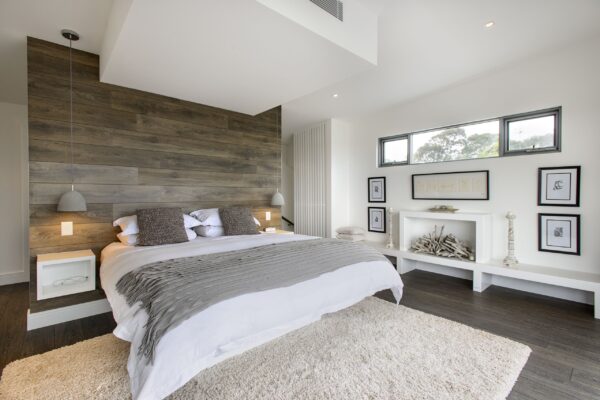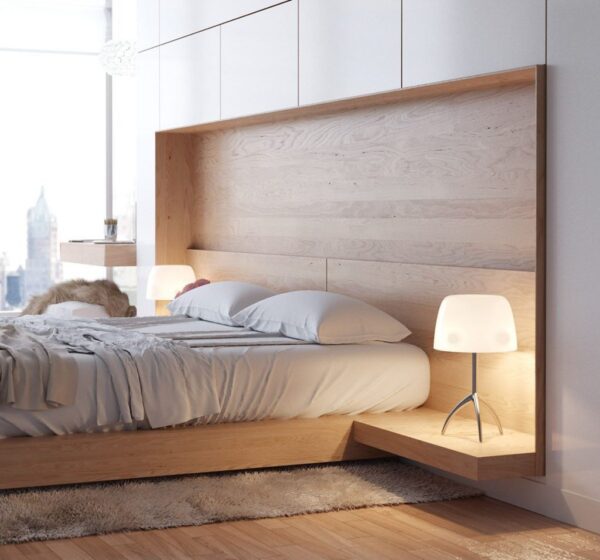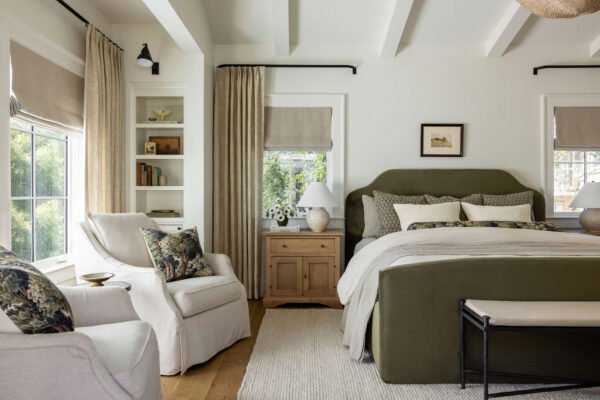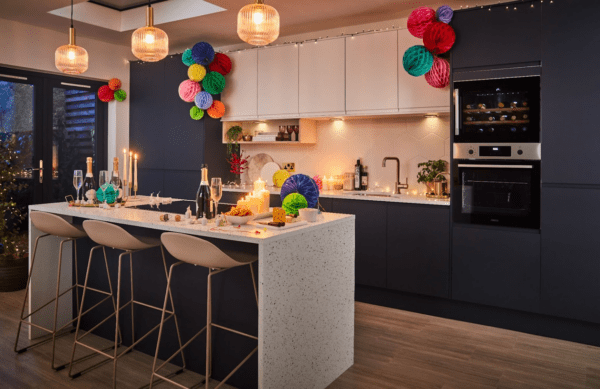
‘Brain Bedrooms’: What are They and How Do They Help Us Sleep
Sleep expert reveals the surprising items of furniture causing restless nights

As we transition into a new season, many of us are finding ourselves battling blocked noses and restless nights. In fact, searches for illness and allergy-related queries, such as ‘how to sleep with a cough,’ have surged by 2400% as people turn to the internet in search of solutions for their disrupted sleep. While seasonal changes can affect our sleep in various ways, there are some surprising bedroom culprits that could be contributing to poor sleep. Barker and Stonehouse spoke to Sleep Health Specialist, Ana Carolina Goncalves, who reveals the key bedroom mistakes stopping us from getting the perfect night’s sleep.
Ana explains that several bedroom elements can contribute to poor sleep quality, she says: “Bedroom items that contribute to poor sleep include old carpets or rugs. Dust mites and allergens collect easily and breathing in these particles overnight can lead to congestion in the nose and throat, which in turn causes sneezing or coughing and can wake us up if inhalation is significant.”
Ana also warns about the impact of electronic devices, she says: “Phones, laptops and TVs can also affect sleep quality, as they emit blue light when switched on, which tricks the body into thinking it’s daytime. These devices also have electromagnetic fields (EMFs) that can disrupt sleep, even when the devices are placed on standby in the bedroom.”
Clutter, she explains, is another factor that’s often overlooked, “Some people might be surprised to learn how much clutter affects our sleep quality. Keeping too many items in the room can keep the brain stimulated in an environment that is supposed to be relaxing, which is why it can be worthwhile clearing up the bedroom floor and switching to a small nightstand with fewer items.”
Ana adds, “This can alleviate some of the stress responses that we can experience around bedtime and during sleep, like having to move things out of the way when getting into bed.”
Furniture placement can also play a role in improving rest. Ana advises:
“Furniture placement can also have surprising effects on sleep. Theories suggest that having a solid headboard behind you can create a sense of security, which could contribute to improving sleep quality.
“Even the materials of your bed frame matter, as natural wood or soft upholstery tend to feel more calming than metal frames, which can feel colder and more disruptive to sleep. Additionally, positioning your bed so your head isn’t under a window or next to the door can reduce subconscious stress, and help improve sleep quality.”
Creating a ‘brain bedroom’, step by step
A great way to create a bedroom space that encourages sleep is to use the ‘brain bedroom’ theory, Head of Product and Displays at Barker and Stonehouse, Lena Gierasinska, explains:
“A ‘brain bedroom’ is designed to create a calm, restful environment that supports better mental wellbeing and improved sleep. The theory suggests that a well-designed sleep space, featuring minimal clutter, warm lighting, and calming materials, can promote mental relaxation and improve overall sleep quality.”
- Reduce visual clutter
Lena says: “Start by reducing visual clutter, as a messy or overcrowded space can overstimulate the brain and make it harder to unwind, and find clever storage solutions, like under-bed drawers or built-in shelving which can help keep belongings neatly organised and out of sight.”
- Use warm lighting to promote sleep
Lena explains: “Lighting is another important factor as warm, low-level lighting, such as bedside lamps with soft amber tones, encourages relaxation, unlike harsh overhead lights that can interfere with your body’s natural sleep signals.
“Organic shapes are a great choice for the bedroom as they provide warmth through subtle lighting without creating overbearing shadows that conflict with calming ambience of the bedroom. This Flecked Solar Table Lamp blends lighting with decoration and works seamlessly with earthy or neutral toned bedroom themes.”
- Choose natural tones and materials
Lena adds: “Natural materials, like wooden furniture or cotton bedding can also enhance comfort and create a grounding effect that promotes calm. When it comes to the bedroom, a good place to start is with your bed as this is the focal point and in feng shui practises, represents you and your wellbeing.
“The solid structure of the bed combined with comforting decorative elements allows you to create a centrepiece that incorporates varied natural elements as well as providing the feeling of comfort and security that you should have in the bedroom. Start with a wooden bedframe and a solid headboard and layer woven cushions with fringed throws. Play around with different textures and how you might layer them, until you find the right balance between comfort and style.
“Combined with a thoughtfully arranged space that feels open and inviting, these elements work together to create a bedroom that truly supports your brain’s need to switch off and recharge.”












































